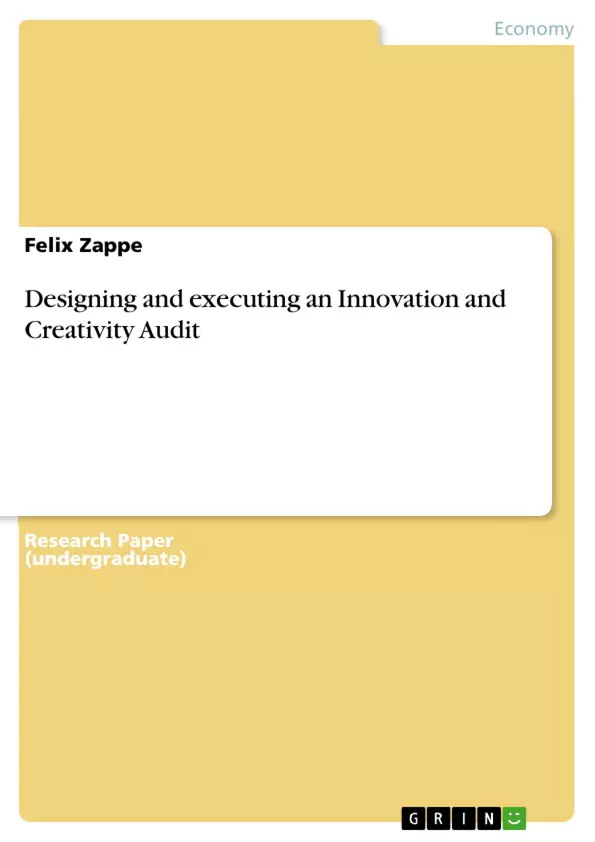This work introduces an approach towards auditing the innovative and creative capabilities of organisations. It shows four main pillars of these capabilities, gives credit to respective literature and provides questions to ask in an actual audit.
Inhaltsverzeichnis (Table of Contents)
- INTRODUCTION
- THEORETICAL BACKGROUND
- CURRENT STATE OF INNOVATION AUDITS AND BEST PRACTICES
- TOWARDS AN OWN SET OF INNOVATION AUDIT QUESTIONS ....
Zielsetzung und Themenschwerpunkte (Objectives and Key Themes)
This work aims to assess a company's ability to stimulate innovation and foster creativity among its employees, with the goal of developing an innovation and creativity audit framework that can increase idea generation capabilities and lead to potential innovation.
- The importance of innovation in a rapidly changing business environment
- The need for a structured approach to assess innovation efforts
- The identification and analysis of existing innovation audit frameworks
- The development of a framework for assessing creativity and innovation
- The potential for increased idea generation and innovation through the framework
Zusammenfassung der Kapitel (Chapter Summaries)
- Introduction: This chapter introduces the concept of innovation in today's hyper-competitive business environment, highlighting the need for companies to constantly innovate and allocate resources effectively. It also emphasizes the lack of clarity regarding existing innovation efforts within many companies, setting the stage for the focus of the work on developing an innovation and creativity audit framework.
- Theoretical Background: This section provides an overview of existing innovation audits, focusing on identifying patterns and choosing particular questions to be asked within the framework developed in this work. It delves into various approaches, including McKinsey 7's Framework, the Mediterranean Innovation Alliance's Handbook on the Innovation Audit, Innovation Diamond, and Innovation for Growth Audits.
- Current State of Innovation Audits and Best Practices: This chapter provides a detailed analysis of various innovation audit frameworks, discussing their strengths and weaknesses. The frameworks examined include McKinsey 7-S Model, the Mediterranean Innovation Alliance's approach, the Innovation Diamond, and Innovation for Growth Audits. This analysis helps to inform the development of the framework presented in this work.
Schlüsselwörter (Keywords)
This work focuses on key terms such as innovation, creativity, audit, framework, idea generation, and best practices. It examines various approaches to innovation audits, including McKinsey 7's Framework, Mediterranean Innovation Alliance, Innovation Diamond, and Innovation for Growth Audits. The objective is to develop a comprehensive framework for assessing creativity and innovation within organizations, leading to potential innovation.
- Quote paper
- Felix Zappe (Author), 2017, Designing and executing an Innovation and Creativity Audit, Munich, GRIN Verlag, https://www.grin.com/document/358196



